20 Simple Vegetables, Fruits, and Herbs Perfect for Beginner Gardeners
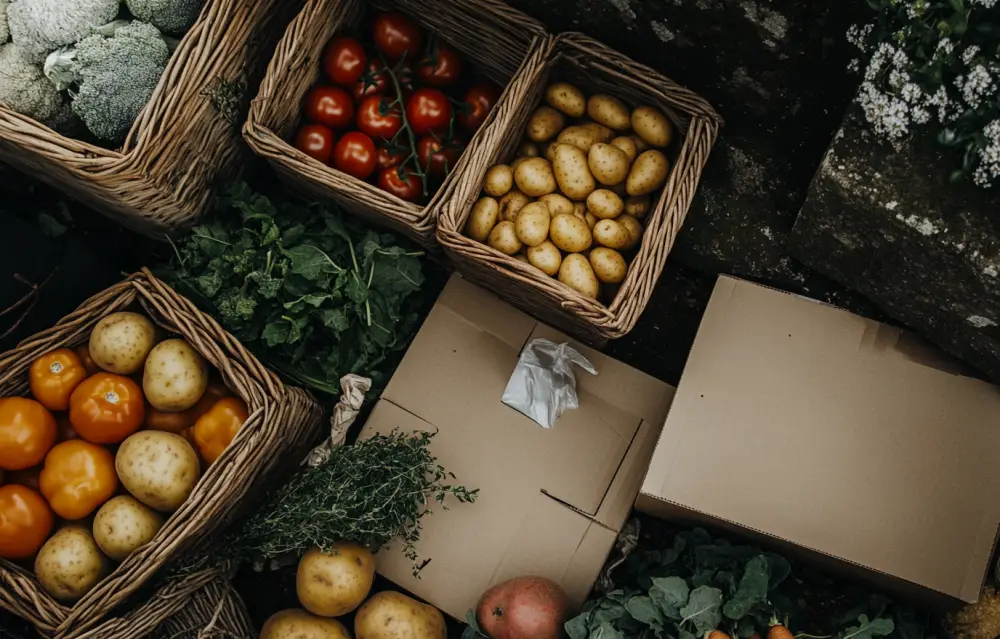
Growing your own food offers plenty of rewards—it’s relaxing, nutritious, and gives you a deeper connection to nature. Plus, it makes your meals taste even better! You don’t need a huge garden to enjoy these benefits. Starting with a few herb plants, a packet of seeds, or some easy-to-grow vegetables, fruits, or herbs is more than enough.
Whether you have a yard, a patio, or access to a community garden, it’s simple to get started. With beginner-friendly plants and a little care, you’ll be shopping for dinner right at home in no time!
RELATED: 20 Brilliant Ideas to Transform Your Small Backyard into a Dreamy Outdoor Retreat
Simple Vegetables to Plant
It's critical to determine whether the veggies you choose for your garden are warm-season or cool-season:
- Vegetables that grow in the cooler months include radishes, garlic, onions, lettuce, carrots, and asparagus. They are perfect for planting early in the season because they can withstand some frost. Some even permit the fall harvest of a second crop.
- Warm-season vegetables should only be planted after the last frost in the spring and harvested before the first frost in the fall since they cannot withstand frost.
1 | Bell Peppers
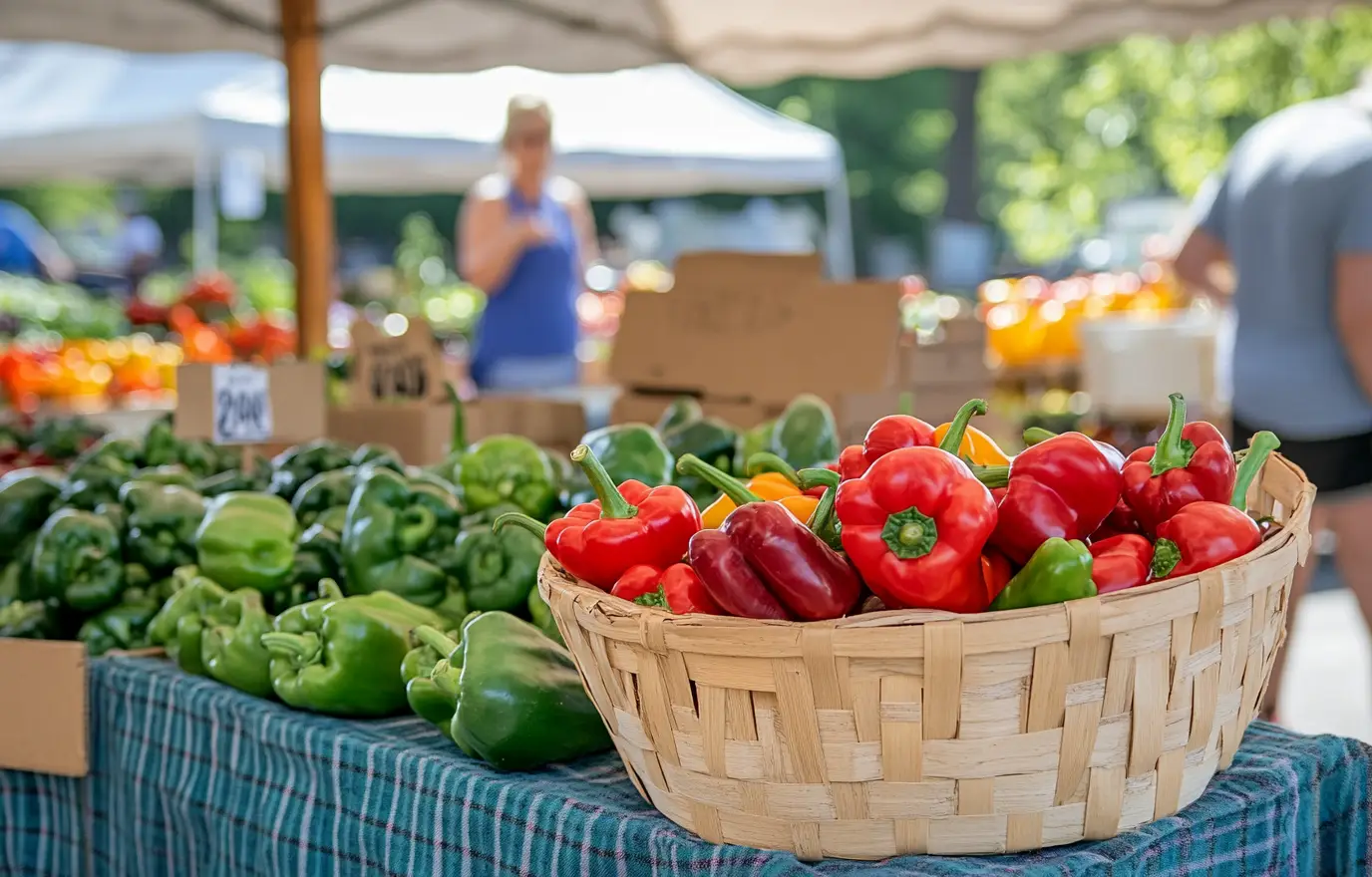
Colors: Green, yellow, orange, and red (ripening from green to the other colors)
Nutrition:
- High in potassium, which helps maintain healthy blood pressure
- Packed with vitamin C, boosting the immune system
- Rich in vitamin A, promoting good vision and skin health
Culinary Uses:
- Perfect for salads, stuffed peppers, or as a healthy snack
- Adds a sweet crunch to any dish
Harvesting:
- Pick peppers when they reach the desired color (green peppers are immature, while others are fully ripe).
- Gently cut or twist the peppers off the plant, leaving a small stem.
Storage:
Refrigeration: Place peppers in a plastic bag and store in the crisper drawer for up to 10 days
Freezing:
- Wash and cut peppers into desired sizes
- Blanch them briefly in boiling water for 2 minutes, then cool in ice water
- Freeze in a sealed plastic bag for up to 1 year
Sun: Needs full sun (6-8 hours of sunlight daily)
Soil: Prefers well-draining soil that stays moist but not waterlogged
Planting:
- Wait until at least 1 week after the last frost to plant
- Space plants about 18 to 24 inches apart to give them room to grow
- Water regularly, but ensure the soil doesn't get too soggy
Care:
- Fertilize with a balanced fertilizer every 4-6 weeks during the growing season
- Support plants with stakes if needed, especially for larger varieties
2 | Green Beans

Growth:
- Quick germination in 7-10 days
- Grow prolifically but not out of control, making them ideal for beginners
- Ready to harvest in less than 2 months
Types:
- Bush Beans: Compact and grow close to the ground, ideal for container gardening
- Pole Beans: Grow vertically and need a structure like a trellis or fence to climb, taking up less horizontal space
Sun: Needs full sun for at least 6 hours daily
Soil: Prefers well-draining, fertile soil with a pH between 6.0-7.0
Planting:
- Plant seeds after the last frost
- Space bush beans 2-3 inches apart
- Space pole beans 3-4 inches apart and provide vertical support (like a trellis or fence)
Care:
- Watering: Water regularly but avoid waterlogging; keep soil moist, not soaked
- Fertilizing: Beans naturally fix nitrogen in the soil, so they don’t need a lot of fertilizer
Harvesting:
- Pick beans when they are firm and still young for the best taste
- Harvest by gently pulling or cutting the beans from the plant, leaving the roots intact for continued growth
Storage:
Refrigeration: Store fresh beans in a plastic bag in the fridge for up to 1 week
Freezing:
- Blanch beans in boiling water for 2 minutes, then cool in ice water
- Freeze in a sealed bag for up to 1 year
3 | Potatoes
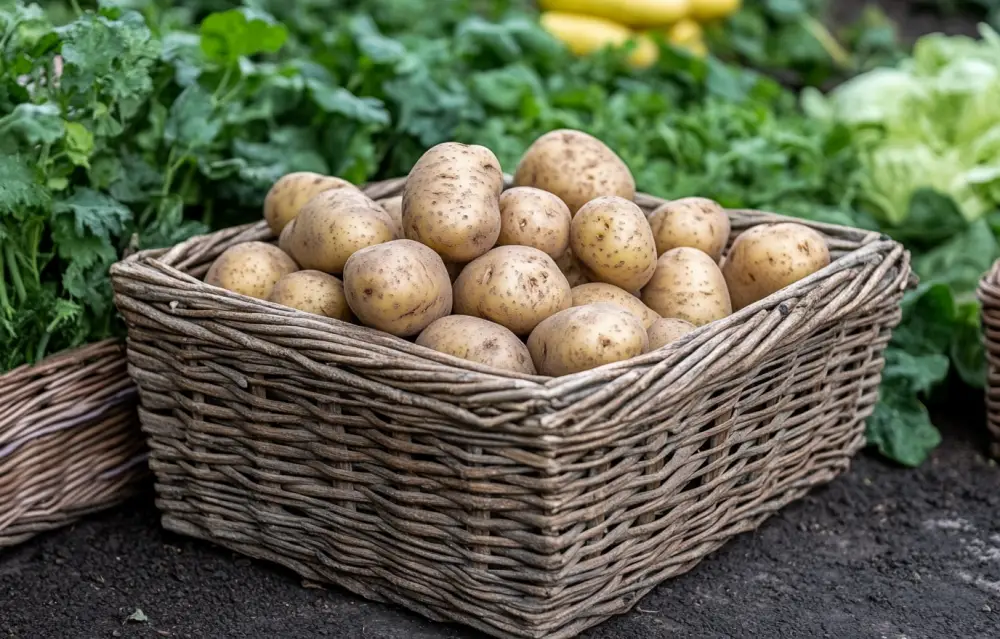
Why Grow Them:
- Easy to plant and care for
- Quick to grow
- Fun to harvest
Potato Varieties:
- German Butterballs and Yukon Golds are beginner-friendly and high-yield.
In the Kitchen:
- Versatile and perfect for boiling, baking, mashing, frying, scalloping, or hasselbacking.
RELATED: How to Grow Delicious Potatoes Right in Your Own Backyard Garden
Start With: "Seed potatoes" (pieces or small whole potatoes)
- Buy certified seed potatoes from a nursery or garden center (not grocery store)
When to Plant: Early spring
How to Plant:
- Choose a sunny spot
- Plant 6 inches deep in loose soil
4 | Brussels Sprouts
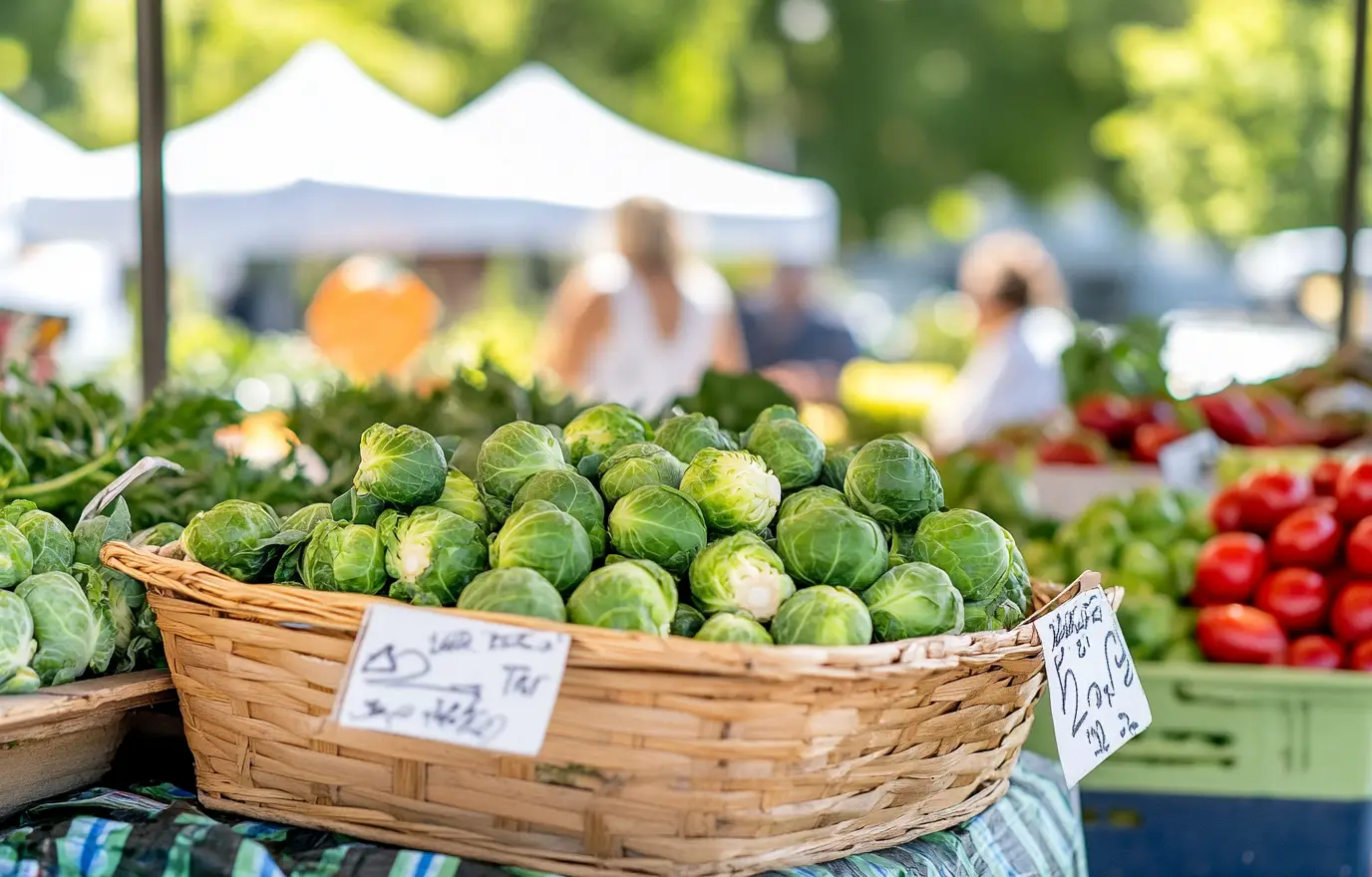
Why Grow Them:
- Cold-hardy and great for cooler seasons
- Packed with vitamins and nutrients
Care Instructions:
- Water consistently to keep soil moist but not soggy
- Fertilize mid-season to support growth
Harvesting:
- Start picking sprouts from the bottom of the stalk once they’re firm and 1–2 inches in size
- Continue harvesting upward as they mature
In the Kitchen:
- Perfect for roasting, sautéing, steaming, or adding to stir-fries.
When to Plant:
- In early spring for a fall harvest
- In late summer for a winter harvest
How to Plant:
- Choose a sunny spot with well-draining soil
- Space plants about 18–24 inches apart
5 | Okra
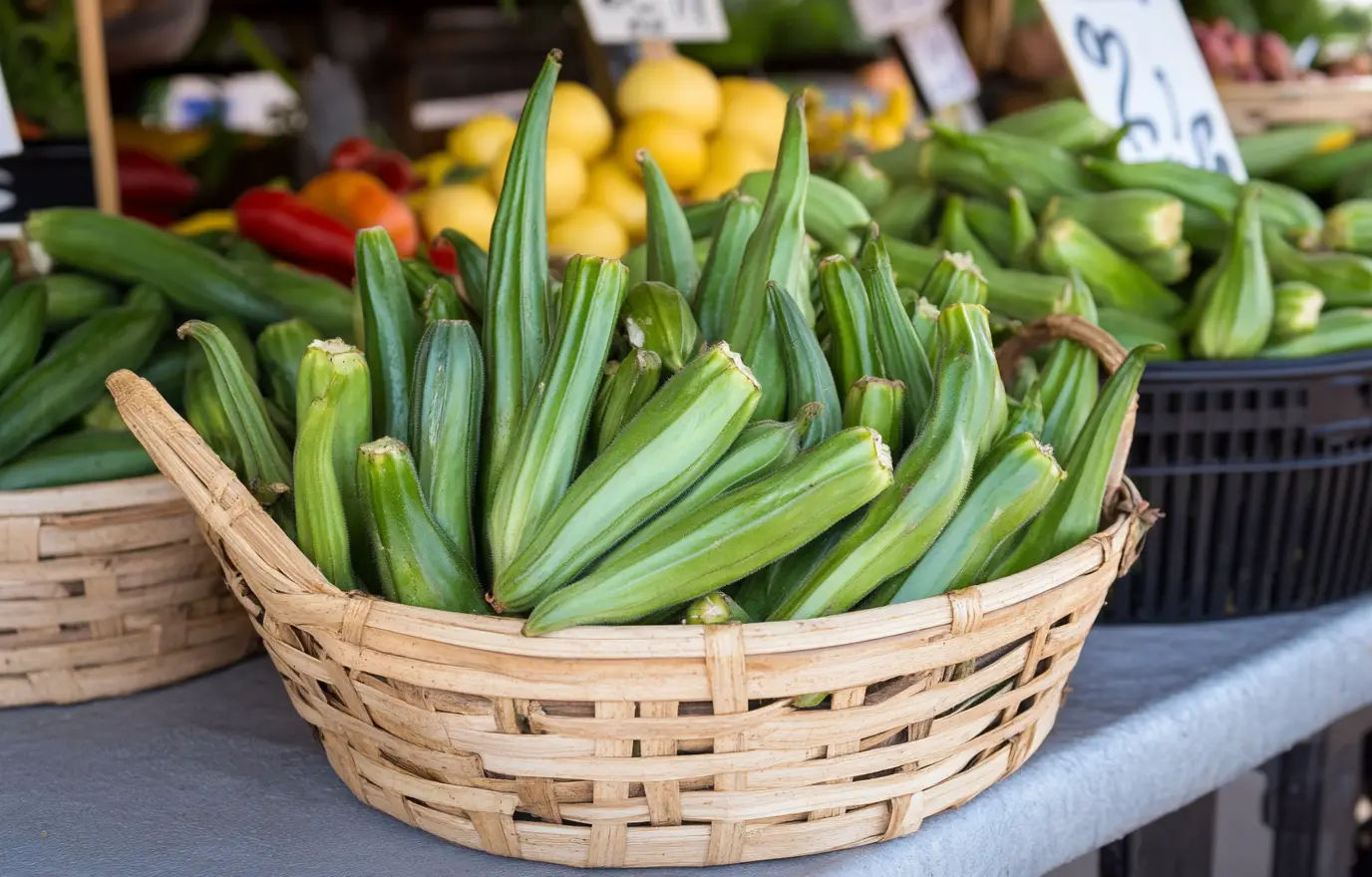
Why Grow It:
- Heat-tolerant and thrives in warm climates
- Easy to grow and produces a bountiful harvest
- High in fiber, vitamin C, and antioxidants
When to Plant:
- After the last frost, when soil temperatures are consistently warm
How to Plant:
- Choose a sunny location with well-draining soil
- Sow seeds 1 inch deep, spacing them 12–18 inches apart
Care Instructions:
- Water regularly to keep the soil evenly moist
- Mulch to retain moisture and suppress weeds
- Harvest young pods when they are 2–4 inches long for the best texture and flavor
Harvesting:
- Pick pods every other day to encourage continued production
- Wear gloves, as okra plants can be slightly prickly
In the Kitchen:
- Great for frying, stewing, grilling, or adding to soups like gumbo
6 | Asparagus
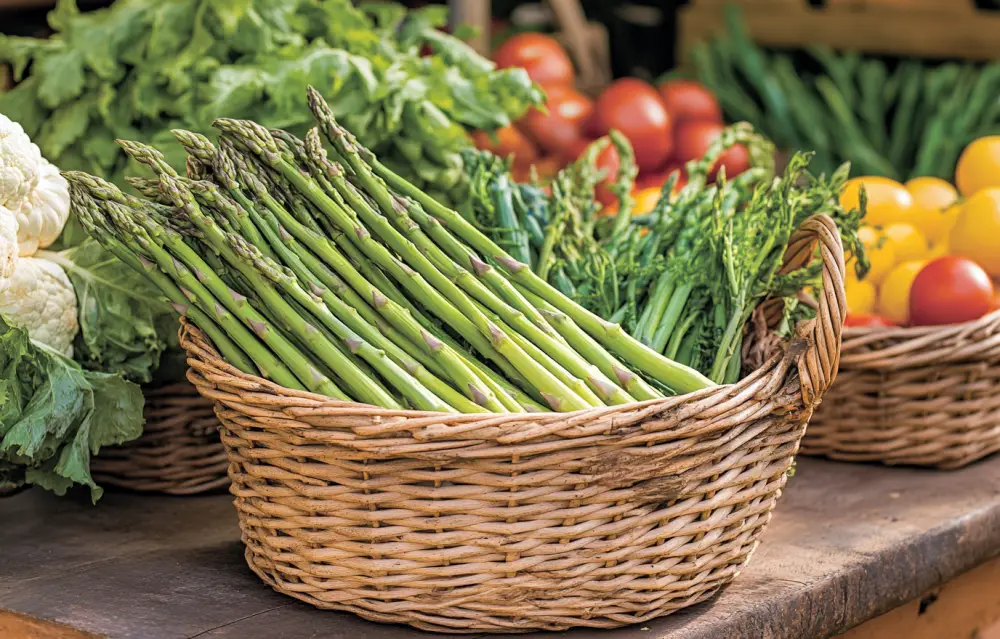
Why Grow It:
- Perennial plant that comes back every year for up to 15 years
- Early spring harvest adds fresh produce to your meals
- Rich in vitamins A, C, and K
When to Plant:
- Early spring, once the soil is workable
How to Plant:
- Start with one-year crowns for an easier setup
- Dig trenches about 6–8 inches deep and space crowns 12–18 inches apart
- Cover with soil and water thoroughly
Care Instructions:
- Keep the soil well-drained and free of weeds
- Mulch to maintain moisture and reduce weeds
- Fertilize annually to promote healthy growth
Harvesting:
- Wait 1–2 years after planting before harvesting
- Harvest spears when they are 6–8 inches tall in early spring
- Stop harvesting after 6–8 weeks to allow the plants to recharge
In the Kitchen:
- Ideal for roasting, grilling, steaming, or adding to soups and salads
- Enjoy the unbeatable flavor of fresh asparagus from your garden!
7 | Broccoli
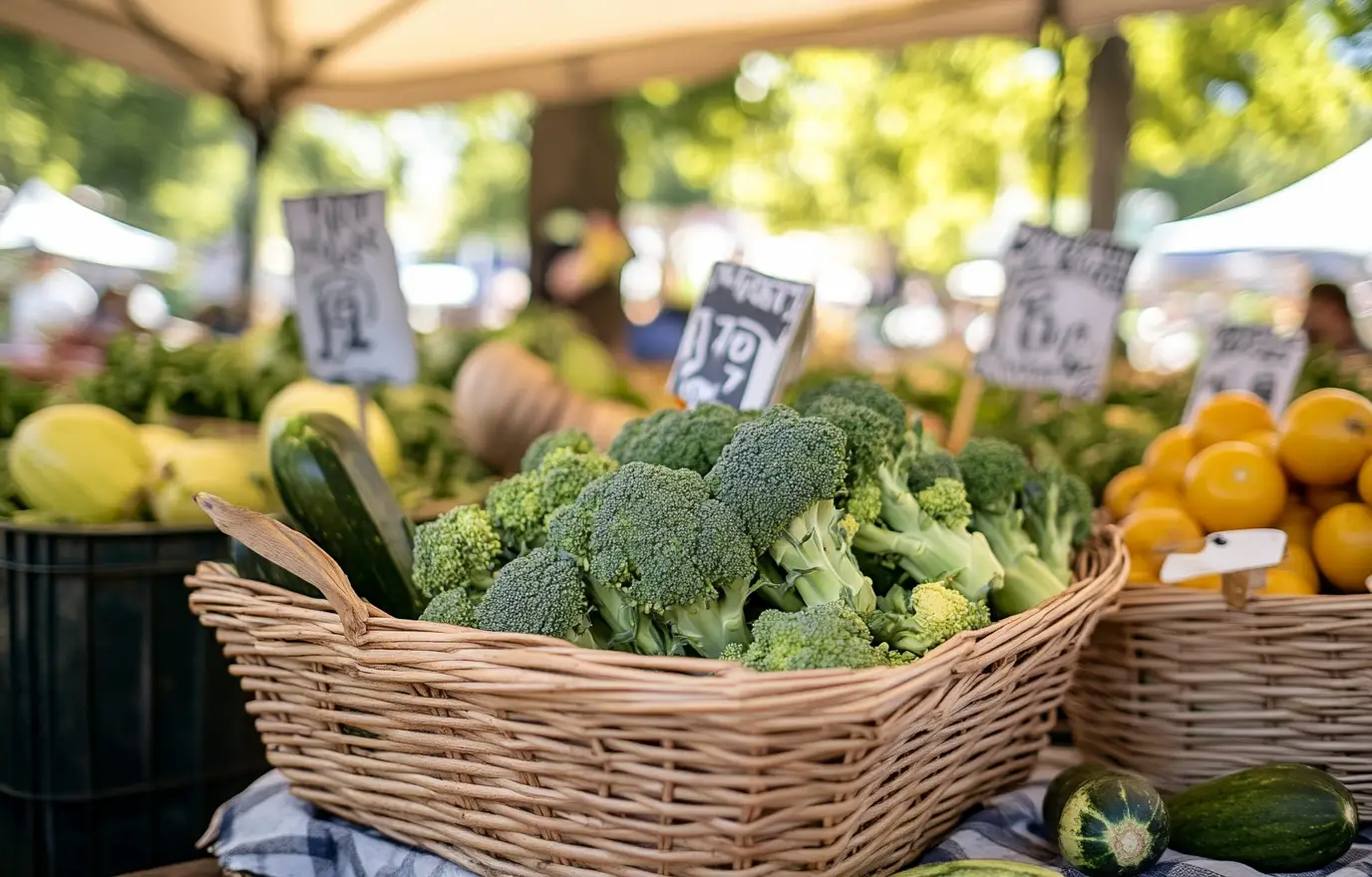
Why Grow It:
- Easy for beginners and thrives in various soil types
- Requires minimal care and offers a nutrient-packed harvest
- Cool-season crop, perfect for spring or fall gardening
When to Plant:
- Early spring or late summer for a fall harvest
How to Plant:
- Space plants at least 12 inches apart to prevent competition for resources
- Keep the soil consistently moist but not soggy
Care Instructions:
- Ensure full sun for optimal growth
- Apply mulch to retain moisture and control weeds
- Fertilize lightly if needed for better yield
Harvesting:
- Ready in less than 2 months after planting
- Harvest the main central head first
- Continue picking the smaller side shoots as they grow
In the Kitchen:
- Steam, roast, or toss into stir-fries and salads
- Packed with vitamins A, C, and fiber, making it a healthy garden addition!
8 | Carrots
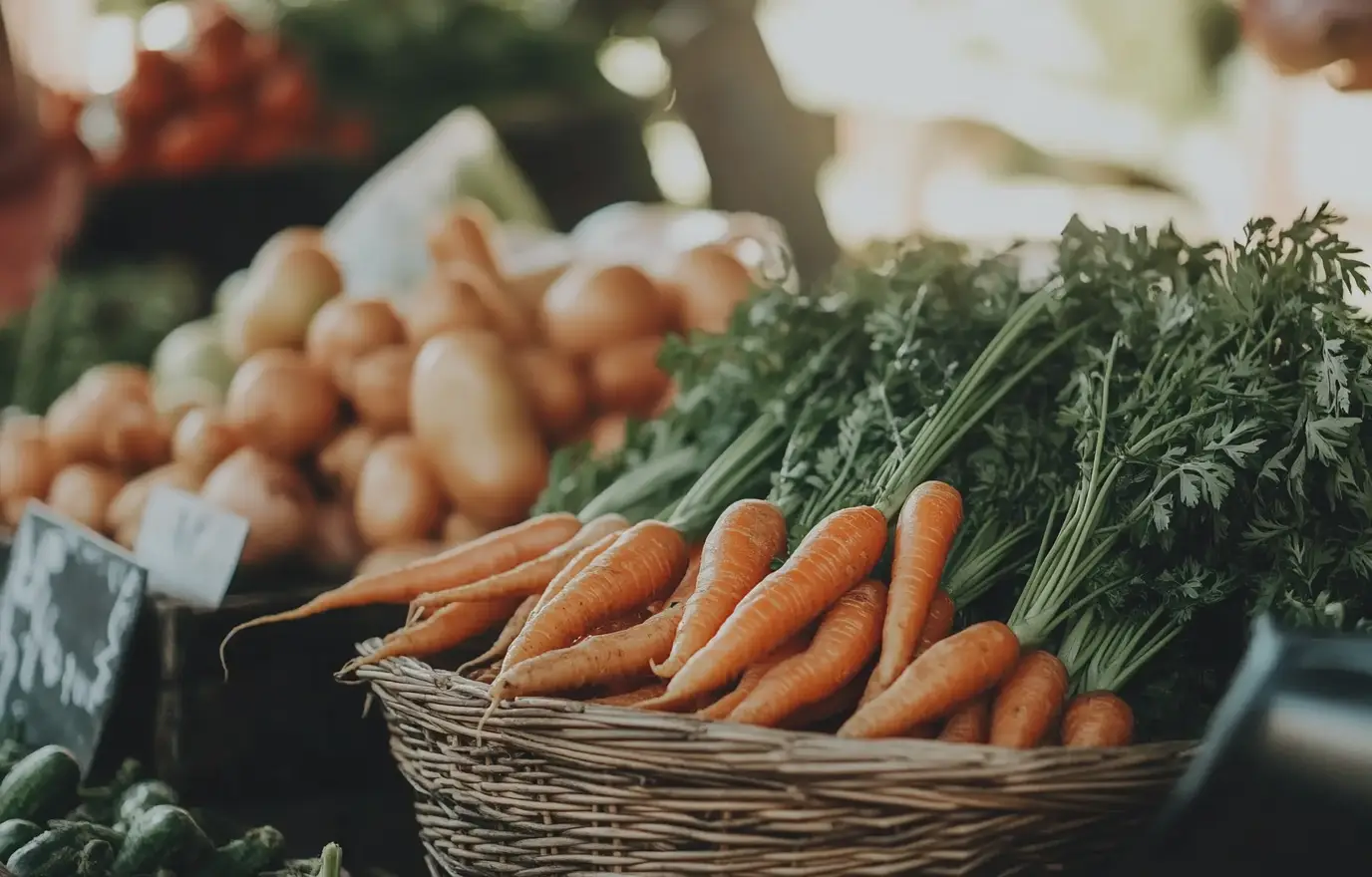
Why Grow It:
- Thrives in Zones 3–10, covering nearly all U.S. regions
- Cool-season root vegetable, ideal for spring or fall gardening
- Easy to grow and yields sweet, vibrant harvests
Start by Seed:
- Carrot roots are sensitive and don’t transplant well
Soil Requirements:
- Loosely packed, well-composted soil with good drainage
- Full sun exposure for optimal growth
Timing:
- Sow seeds in early spring or late summer for a fall harvest
Care Instructions:
- Keep the soil moist but not waterlogged
- Thin seedlings once they sprout to prevent overcrowding
- Protect plants from wildlife like deer and rabbits that love carrot tops
Harvesting:
- Matures in about 70 days
- Wait for peak sweetness and vibrant color before pulling
In the Kitchen:
- Enjoy fresh, roasted, or added to soups and stews
- Rich in beta-carotene, vitamin A, and fiber, making them a nutritious staple!
9 | Cucumbers
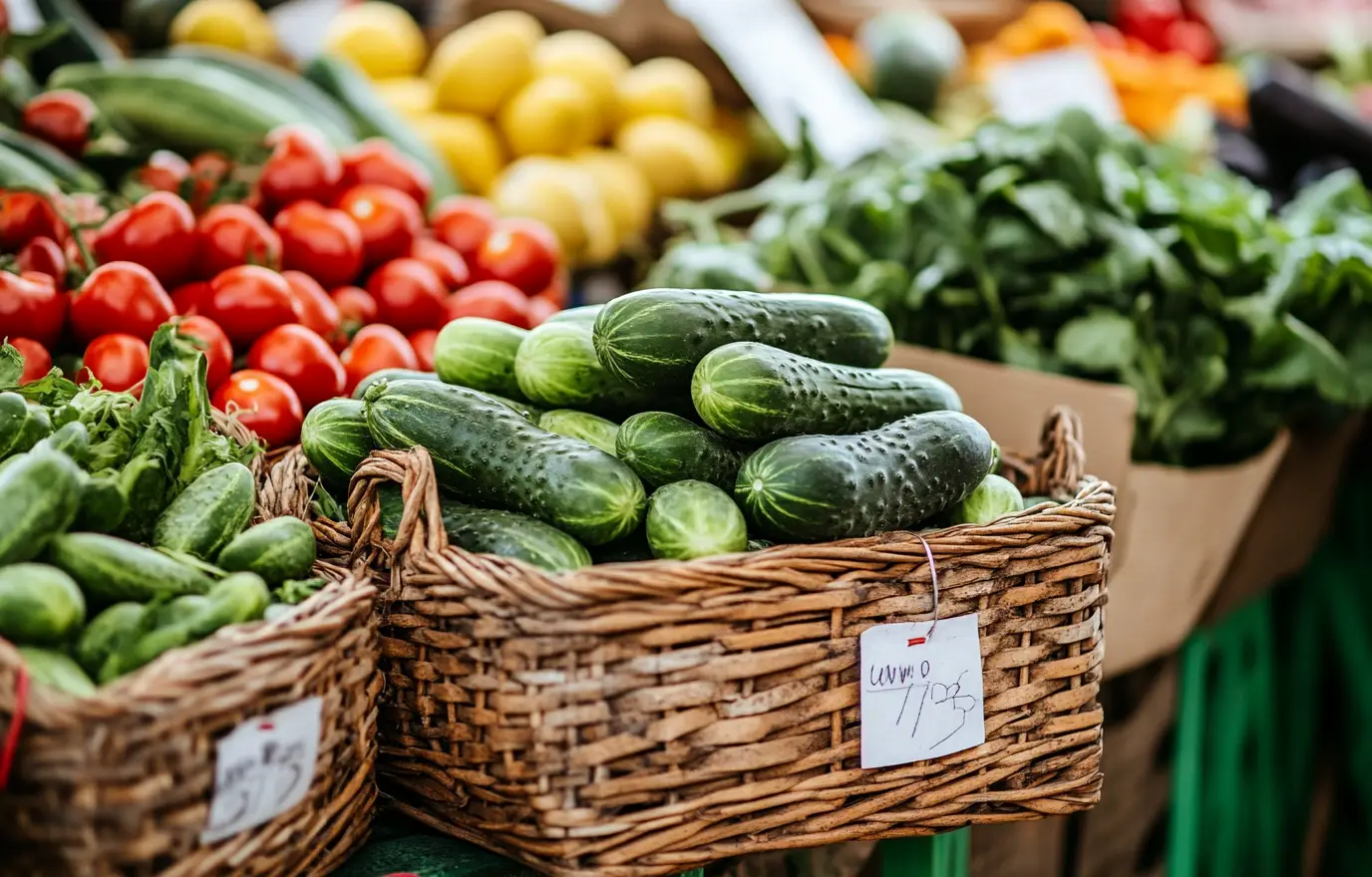
Why Grow It:
- Warm-season crop that grows quickly
- Ready to harvest in as little as 6 weeks
- Superior flavor and texture compared to store-bought cucumbers
Timing:
- Sow seeds a few weeks after the last frost
Trellising:
- Encourage vertical growth to save garden space
- Helps keep cucumbers clean and makes harvesting easier
Care Instructions:
- Provide full sun and consistent watering
- Use nutrient-rich, well-draining soil for optimal growth
Harvesting:
- Pick cucumbers at peak ripeness for the best flavor and crunch
- Regular harvesting promotes continuous production
In the Kitchen:
- Use fresh in salads, sandwiches, or as a refreshing snack
- Perfect for pickling to enjoy their taste well beyond the growing season!
10 | Garlic
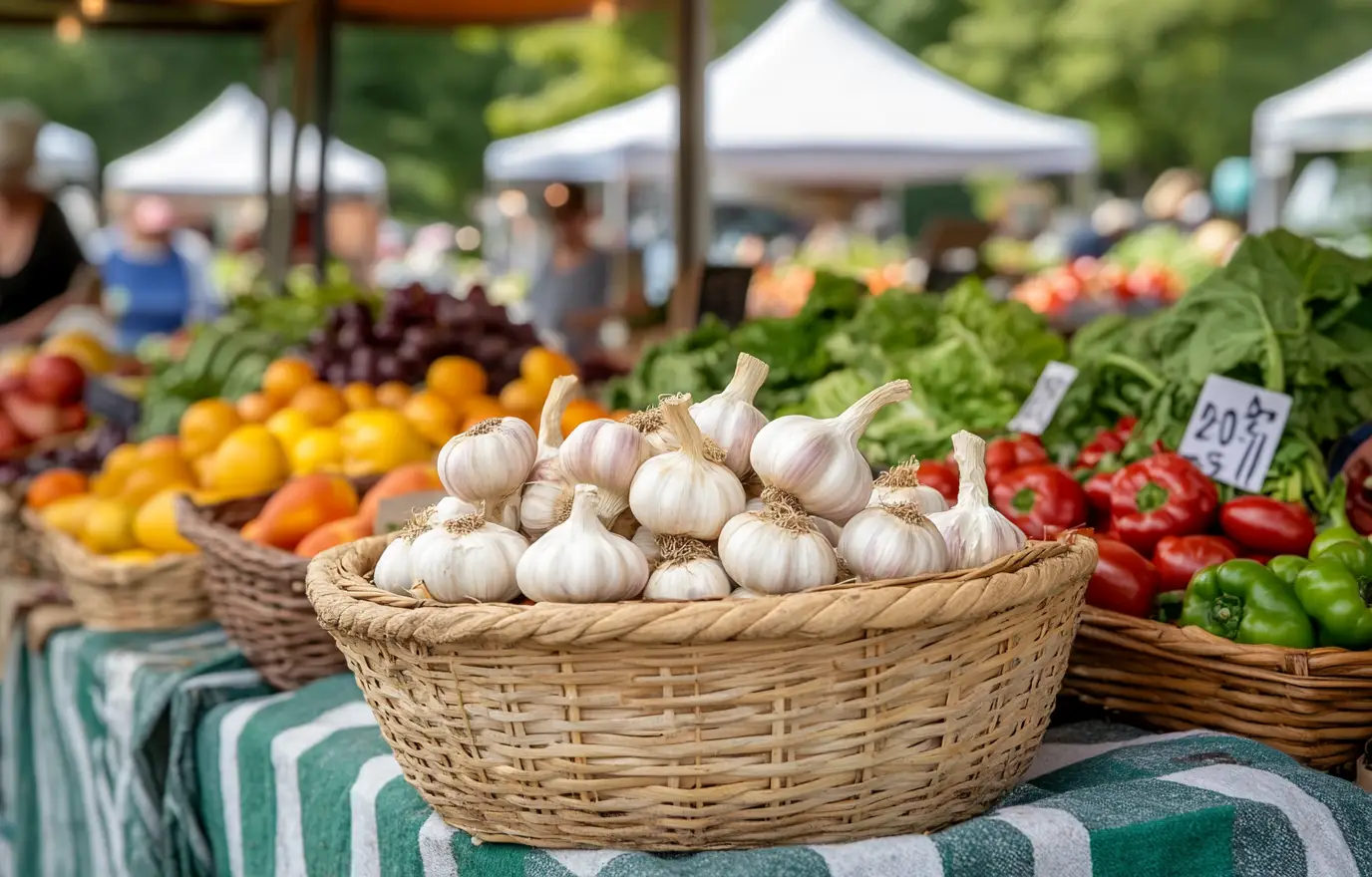
Why Grow It:
- One of the easiest edible plants to start
- Each clove can grow into a new garlic head
Planting Method:
- Use a garlic clove from your grocery store or garden supply
- Bury it 1 inch deep, skin-on, with the pointy tip facing upward
Timing:
- Best planted in fall or early spring, depending on your region
Care Instructions:
- Provide consistent watering but avoid over-saturating the soil
- Ensure garlic gets full sun and is planted in well-draining soil
Growth Timeline:
- Green shoots appear in a few days
- Underground clove develops into a full garlic head over time
Harvesting:
- Wait until the green shoots start to yellow and dry out before harvesting
- Save some homegrown cloves for next season’s planting
In the Kitchen:
- Use freshly harvested garlic in cooking for bold flavors
- Store properly for months of delicious meals!
11 | Leaf Lettuce

Growth:
- Tolerates light frost, allowing for early planting in the season
- Harvest in as little as 1 month after sowing
- Multiple harvests: Keeps growing for additional cuttings after the first harvest
Sun Requirements:
- Thrives in partial shade (at least 4 hours of full sun daily)
- Some varieties are better suited for heat than others
Types:
- Many types of leaf lettuce to choose from
- Mesclun mix: A blend of several lettuce varieties in one packet—perfect if you can't decide
Planting:
- Start seeds early in the season, even before the last frost
- Space seedlings about 6-8 inches apart
- Direct sow seeds into the soil or start indoors and transplant
Care:
- Watering: Keep soil moist but not soggy
- Soil: Prefers loamy and well-draining soil
Harvesting:
Cutting: Pick outer leaves as the plant grows to encourage more leaves to grow (this is known as cut-and-come-again harvesting)
Storage:
- Fresh lettuce can be stored in the fridge for up to 1 week
- For longer storage, you can freeze lettuce after blanching, but its texture may change
- Companion Plants: Grows well with radishes, carrots, and green beans
- Pests: Keep an eye out for aphids and slugs.
12 | Onions
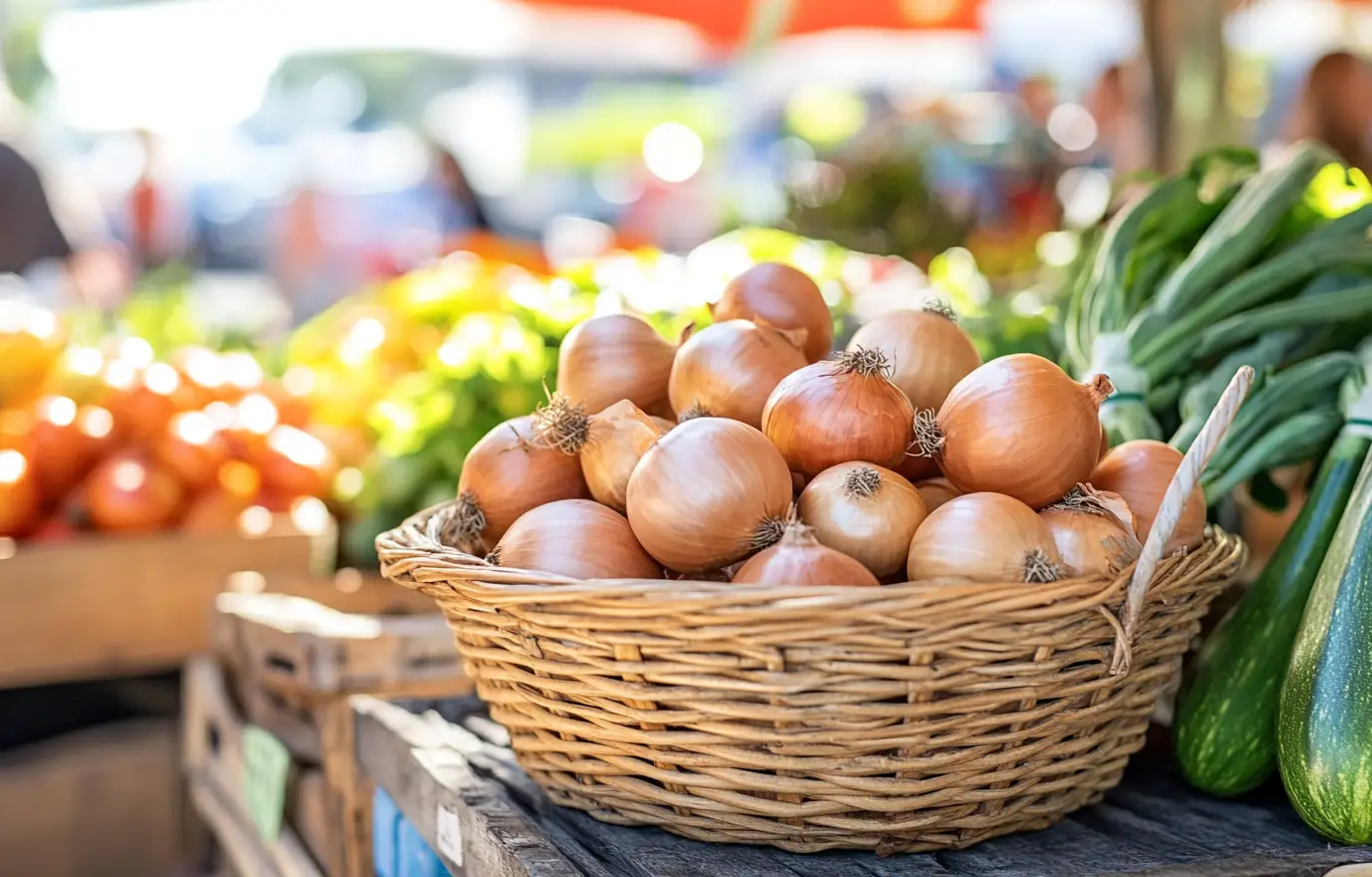
Family:
- Part of the allium family, related to garlic
- Easy to grow and offers a variety of health benefits
Planting:
- You can plant onion seeds, but it's quicker and easier to start with onion sets (small bulbs)
- Onion sets are sold in clumps, usually around 50 per package, available at garden centers or farm stores
Harvesting:
- 50 onions may seem like too many, but they store well and can be preserved in several ways
- Onions can be dehydrated to make onion flakes or powder
Uses:
- Onions are versatile and used in many dishes across nearly every cuisine
Storage:
- Fresh: Keep in a cool, dry place for several months
- Dehydrated: Store dried onions in an airtight container to extend shelf life
13 | Tomatoes
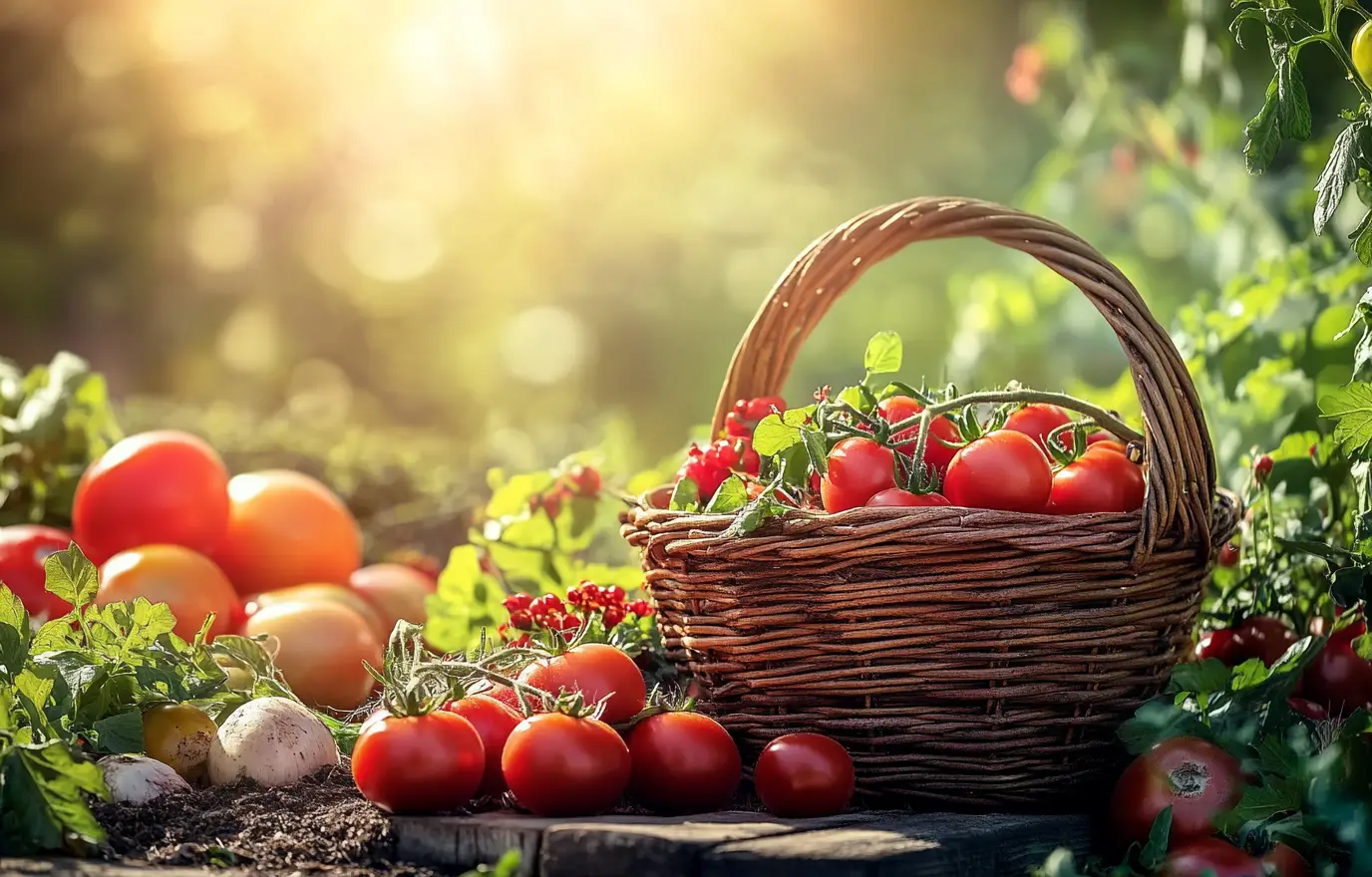
Best part:
- Unmatched flavor when picked fresh off the garden vine
- Access to heirloom varieties not often found in grocery stores
Growing Tips:
- Ideal for container gardening on patios or small spaces, especially cherry tomatoes
- Need at least 8 hours of sunlight per day, heat, and regular watering
- Use stakes or cages to support the plants
Tomato Varieties:
- Cherry tomatoes: Great for salads, easiest to grow
- Roma tomatoes: Perfect for making sauces
- Beefsteak tomatoes: Best for slicing
Growing Advice:
- Start with cherry or small tomatoes if you're new to gardening
- Provide ample sunlight, water, and heat for the best results
14 | Zucchini

Planting Tips:
- Wait until temperatures are consistently in the 70s before planting
- Allow at least 3 feet of space per plant, as they tend to sprawl
- Can be planted next to garlic, mint, and tomatoes
Care:
- Zucchini plants are heavy feeders, so water and fertilize regularly
- They can grow large, but for better taste, harvest when small or medium-sized
Growing Advice:
- Ensure plenty of space for zucchini to spread out
- Regular care leads to productive, healthy plants
Easiest Fruits to Grow
These fruits are easy to grow and, best of all, return year after year without the need to replant. While gardening skills aren't required, patience is key, as it may take a season or two for the plants to mature and start producing fruit.
In addition to planting and watering, regular weeding is important for healthy growth. Make sure to remove weeds around your fruit plants as they can compete for nutrients and water, slowing down the growth of your crops. A layer of mulch can help prevent weeds from growing and keep the soil moist.
RELATED: 12 Common Garden and Lawn Weeds You Should Know—and How to Eliminate Them for Good
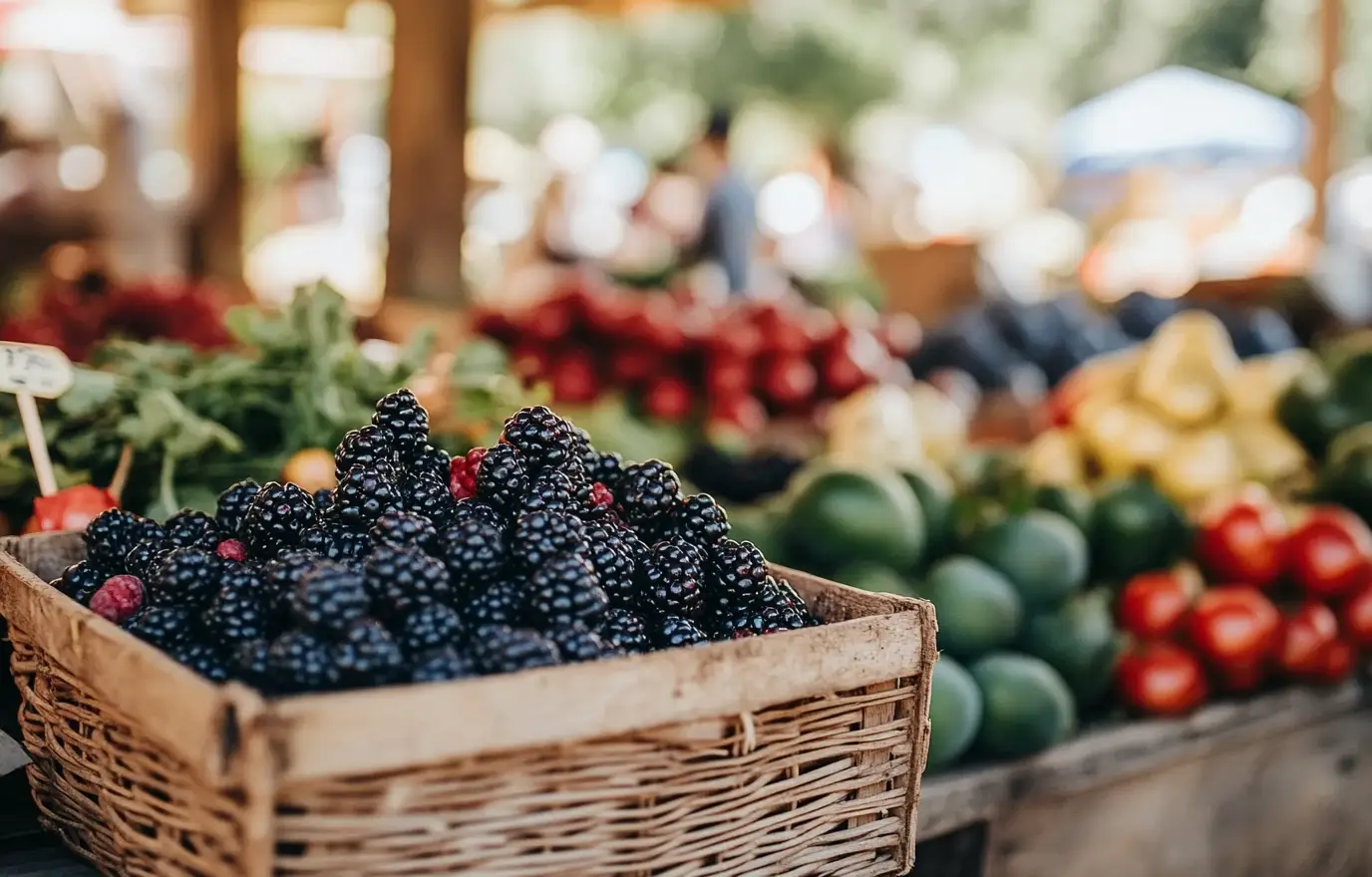
15 | Blackberries
- Blackberries are delicious and healthy, perfect for making pies, jams, cobblers, and smoothies.
- They freeze well, so you can enjoy your harvest all year long.
Growing Tips:
- Different blackberry varieties need different growing conditions, so check with your local garden center to find the best one for your area.
- Blackberries come in two types: erect and trailing. Trailing types need a trellis or support to grow properly.
- Choose thornless varieties to make picking easier.
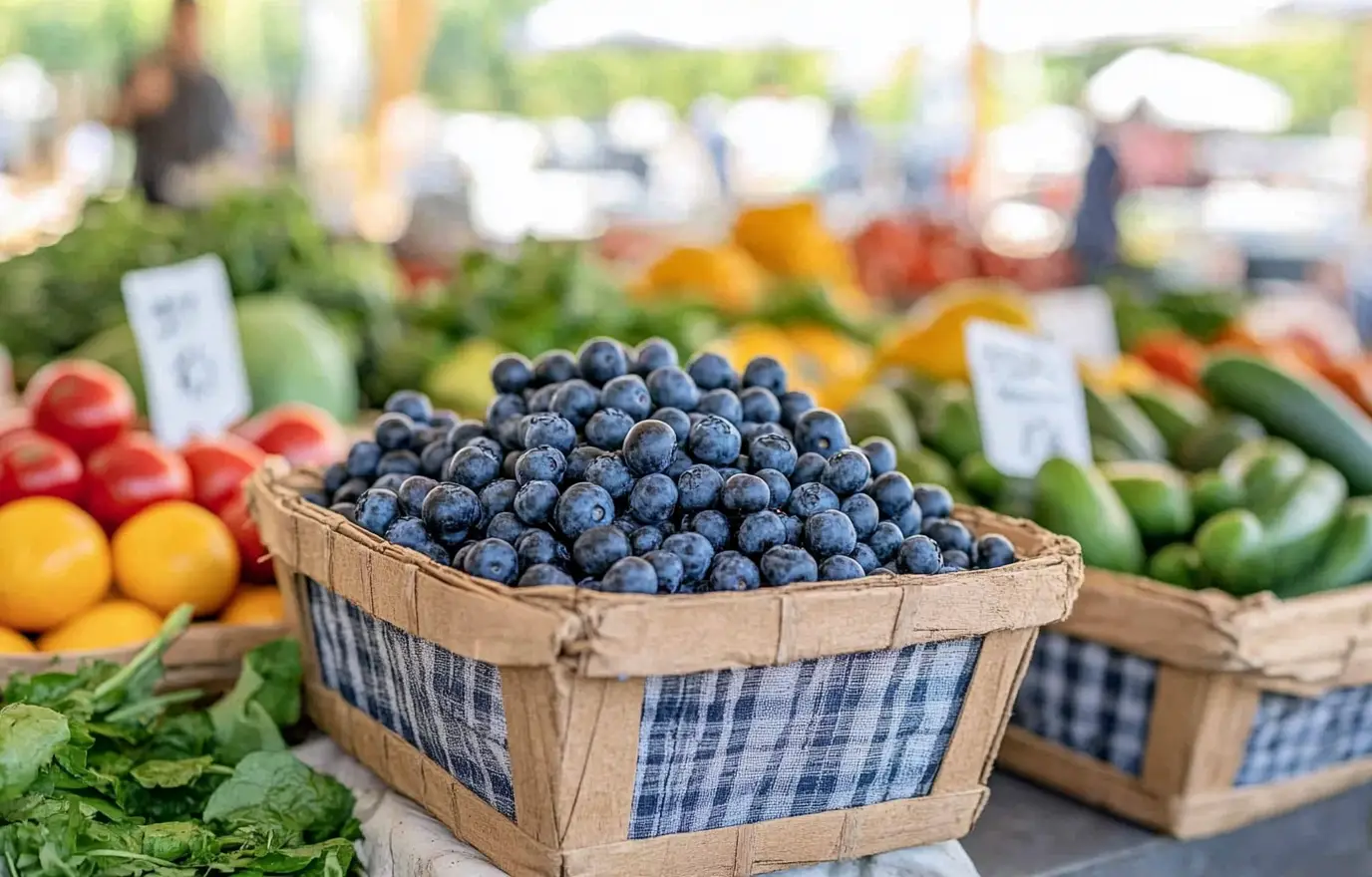
16| Blueberries
- Blueberries are an easy and low-maintenance fruit, perfect for beginners. They grow as well-behaved shrubs that fit seamlessly into any home garden.
- These shrubs add beauty to your landscape with their spring flowers and vibrant red leaves in the fall.
Why Grow Blueberries?
- They’re packed with nutrients and health benefits.
- Blueberries are incredibly versatile—enjoy them fresh, in desserts, or as part of a summer pie.
How to Grow Blueberries
- Choose the Right Variety: Select a variety suited for your climate. Check with local garden centers to find highbush or lowbush blueberries that grow best in your area.
- Pick the Perfect Spot: Blueberries thrive in full sun. Choose a location that gets at least 6-8 hours of sunlight daily. Ensure the soil is well-draining and acidic (pH 4.5–5.5). Use a soil test kit if needed.
- Prepare the Soil: Amend the soil with peat moss, pine bark, or sulfur to lower the pH. Avoid planting in heavy clay or alkaline soil unless raised beds or containers are used.
- Planting Time: Plant blueberries in early spring or late fall. Space bushes 4–6 feet apart. Dig a hole twice as wide as the root ball but no deeper. Place the plant at the same depth it was growing in its container.
- Water Regularly: Blueberries need consistent moisture, especially during their first year. Water deeply once or twice a week. Add a layer of mulch (2-3 inches) to retain soil moisture and prevent weeds.
- Fertilize Wisely: Use a fertilizer formulated for acid-loving plants (like those for azaleas or rhododendrons). Avoid over-fertilizing, as it can damage roots.
- Prune Annually: Prune in late winter or early spring. Remove dead or weak branches and shape the bush for better airflow and sunlight.
- Protect the Harvest: Use netting to keep birds from eating your berries as they ripen.
Harvesting Blueberries
- Blueberries are ready to pick when they turn deep blue and come off the bush easily. Wait a few days after they first turn blue for maximum sweetness.
Blueberries thrive in acidic soil and full sun. Make sure to plant them in the right conditions to enjoy a bountiful harvest.
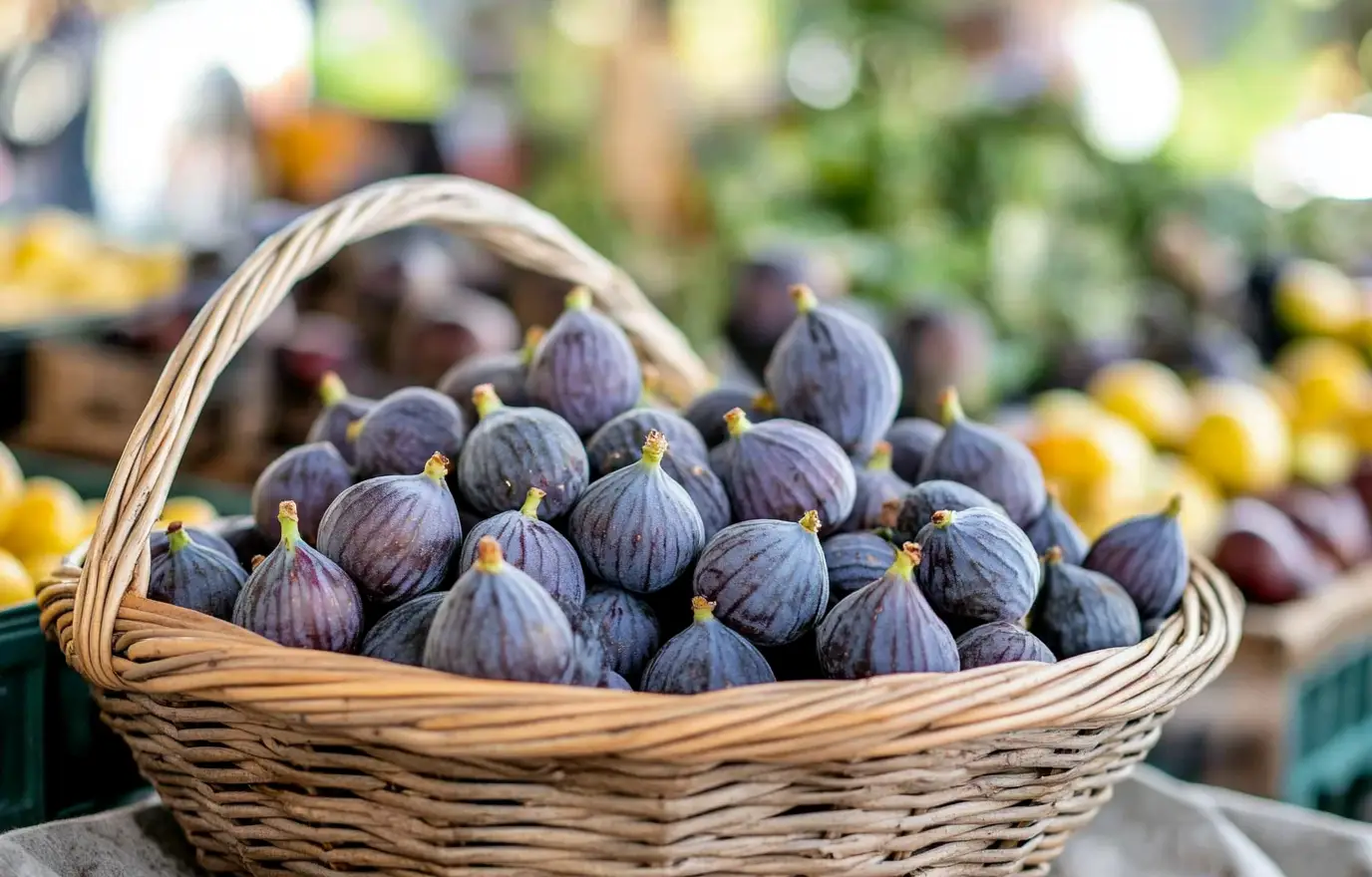
17 | Figs
Figs are low-maintenance, rewarding plants that provide a bountiful harvest and enhance the beauty of your garden or patio!
How to Grow Figs
- Choose the Right Variety: Select a fig variety suitable for your climate. For small spaces or containers, consider dwarf options like "Fignomenal."
- Find the Perfect Spot: Figs thrive in full sun, needing at least 6 hours of direct sunlight daily. Ensure the location is sheltered from strong winds, especially for young plants.
- Planting Time: Plant figs in early spring or early fall when the weather is mild. If growing in the ground, ensure the soil is well-draining. Figs tolerate poor soil but perform better with compost or organic matter added.
- Container Growing Tips: Use a large container (at least 15 gallons) with drainage holes. Fill with a quality potting mix, and repot every 2-3 years as the tree grows.
- Watering and Mulching: Water regularly during the first year to help the tree establish roots. Once mature, figs are drought-tolerant but benefit from consistent watering during fruiting. Add a layer of mulch to retain soil moisture and regulate temperature.
- Fertilizing: Fertilize sparingly. Use a balanced, slow-release fertilizer in spring if growth seems slow or leaves are pale.
- Pruning: Prune in late winter to remove dead or overcrowded branches and shape the tree. Keep container figs smaller by trimming back growth after harvesting.
- Protecting Your Fig Tree: In colder regions, wrap the tree in burlap or move container-grown figs indoors during winter.
Harvesting
- Figs are ripe when they are soft to the touch, droop slightly, and emit a sweet aroma. Harvest them gently as they bruise easily.
Simple Herbs to Grow
Instead of going to the supermarket, picture going outside for a fresh basil leaf, a stem of rosemary, or a sprig of mint. Herb gardening is easy and very satisfying!
Herbs bring brilliant freshness and flavor to your cuisine while taking up very little room and effort. You can grow them indoors on a sunny windowsill or plant them next to your kitchen for easy access.
Start your herb garden with adaptable, easy-to-grow plants like Rosemary, Mint, or Cilantro. These herbs will enhance your meals and add a little convenience and freshness to your kitchen, whether you're cooking indoors or out.
RELATED: 27 Perennial Plants That Will Keep Your Garden Blooming
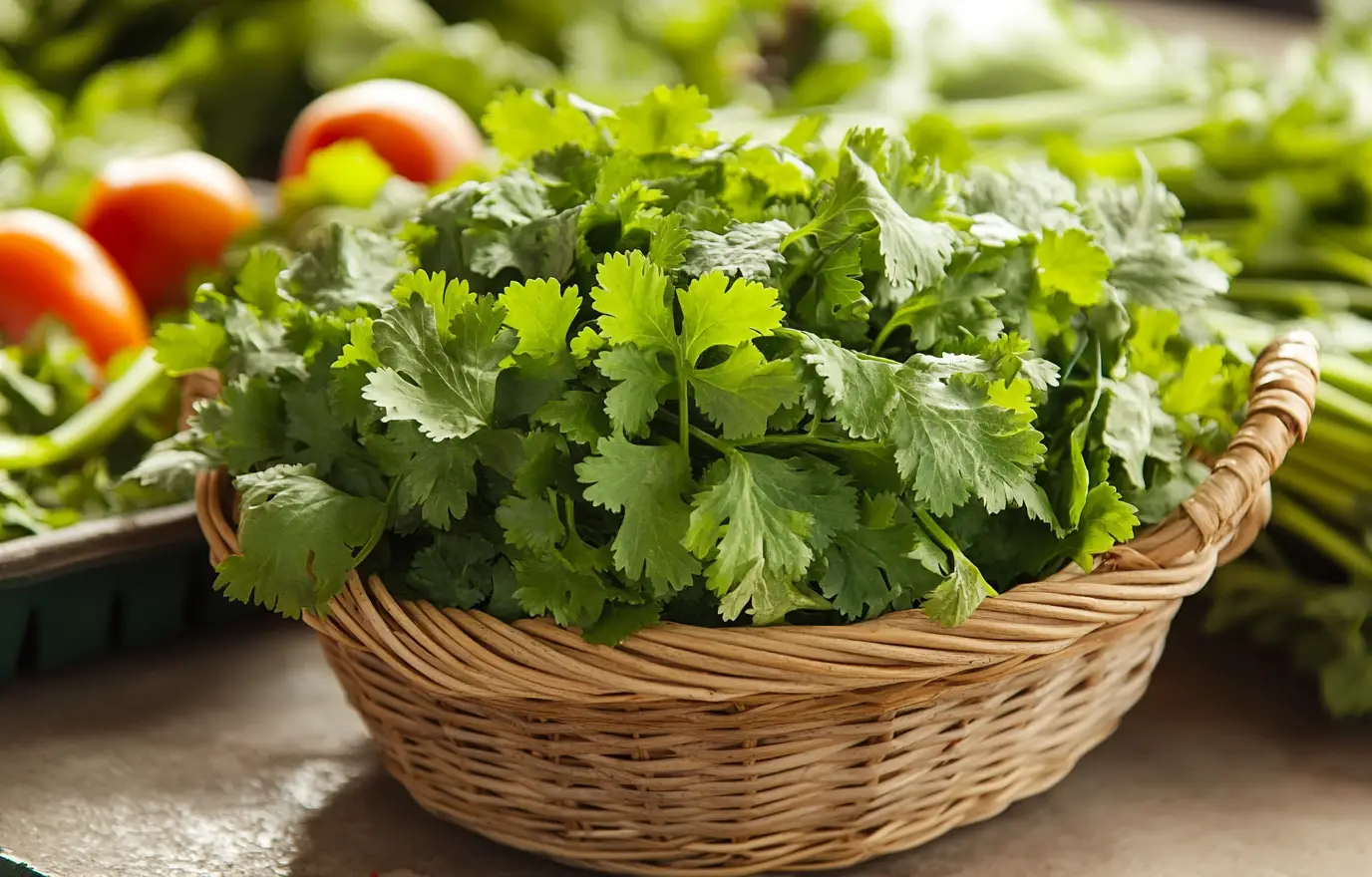
18 | Cilantro and Coriander: One Plant, Two Uses
Did you know cilantro and coriander come from the same plant? Here’s how you can enjoy both an herb and a spice from a single pot:
- Cilantro: The leafy green part, perfect as a garnish or to flavor sauces and salads, especially in Asian and Latin American dishes.
- Coriander: The seeds, used as a spice in pickling brines, Mediterranean recipes, and Indian cuisine.
How to Grow
- Use whole coriander seeds from your spice rack to start growing cilantro.
- Cilantro grows well in pots or directly in the ground but prefers a sunny spot and mild temperatures. Avoid extreme heat or frost.
- Start harvesting when stems are 4 to 6 inches tall. Snip fresh, young stems and leaves for the best flavor. (Older, fern-like leaves can taste bitter.)
When
- Snip the flowers to encourage more leafy growth.
- Let the flowers dry and collect coriander seeds to use in cooking or to plant next season.
- Do nothing: Allow the seeds to fall naturally, and you’ll likely have new cilantro plants the following year.
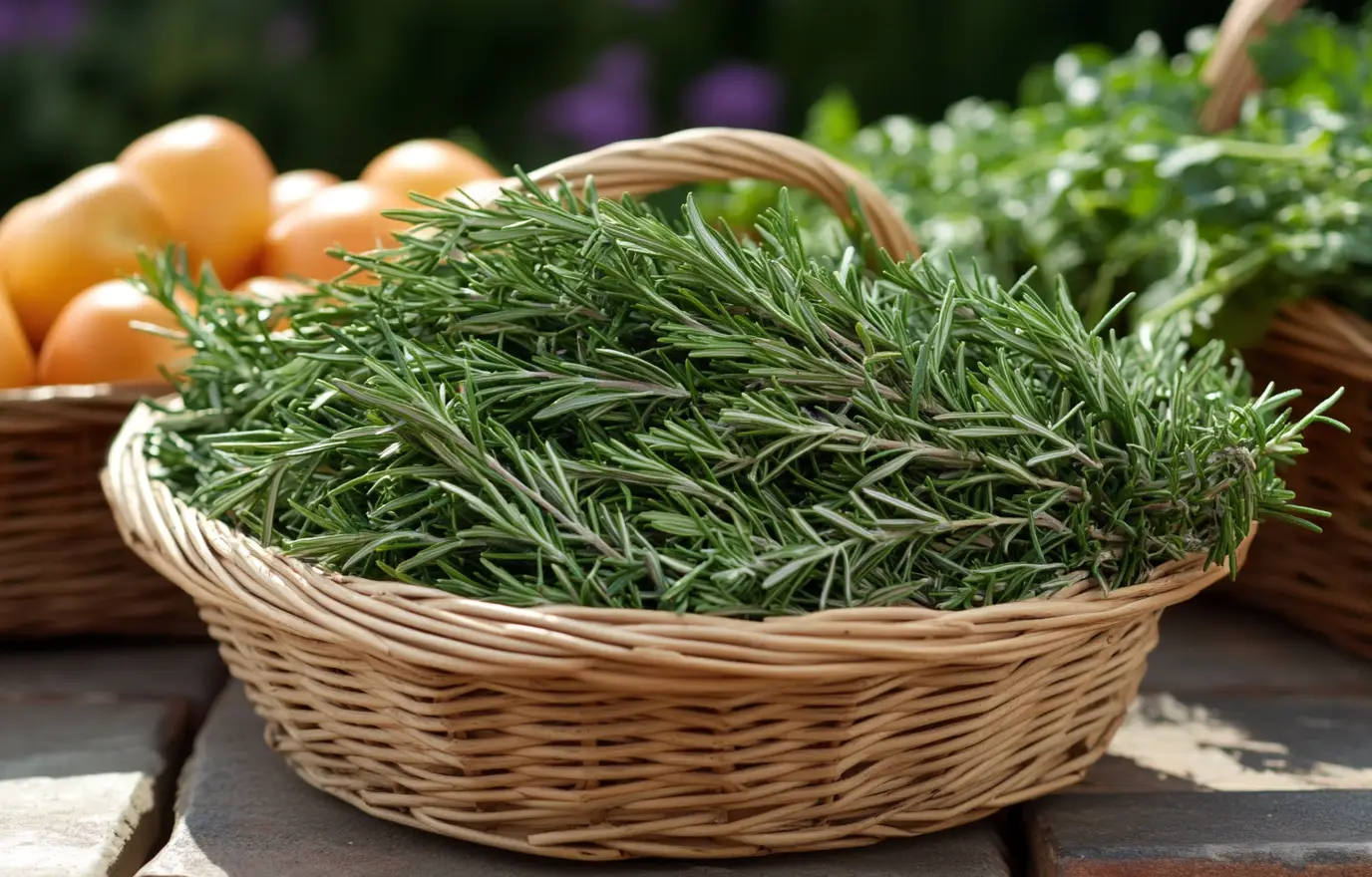
19 | Rosemary
Got a dry, sunny spot where nothing thrives? Try rosemary—it loves those conditions. Technically an evergreen shrub, rosemary returns year after year, growing up to 6 feet tall. However, in colder climates, it may need to overwinter indoors.
How to Grow
- Skip the seeds! Growing rosemary from seed can be tough. Instead, pick up seedlings from a garden center.
- Plant rosemary in a sunny area with well-draining soil. It spreads quickly and thrives in hot, dry conditions.
- In mild climates, it can serve as an aromatic hedge or be planted near seating areas for its delightful fragrance.
Uses
Snip fresh sprigs for cooking. It’s perfect for enhancing dishes like garlic-rosemary focaccia or roasted vegetables.
If you live in a colder region, pot your rosemary to bring it indoors during winter—it makes a fragrant and functional addition to your kitchen.
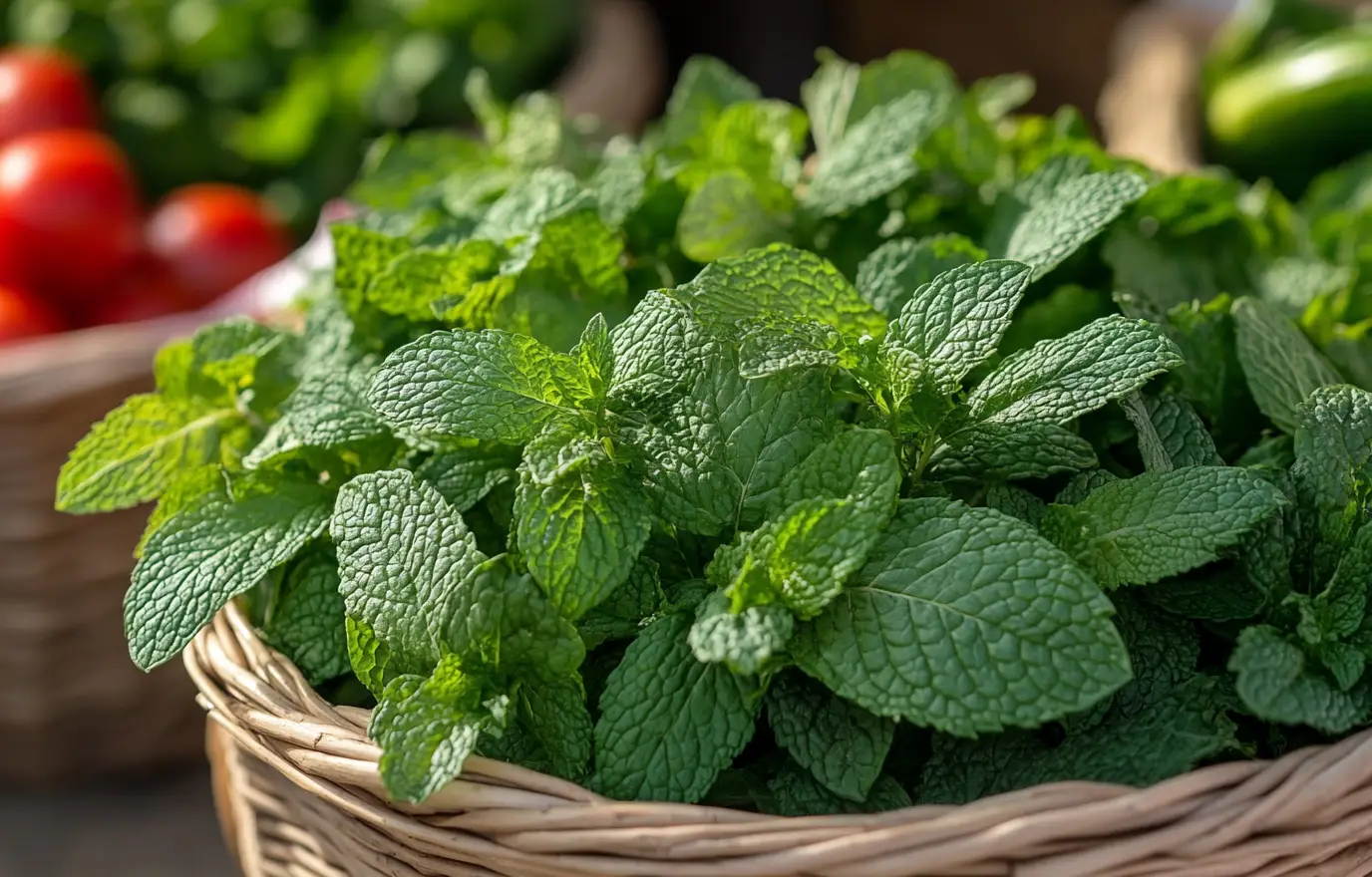
20 | Mint
Mint is one of the easiest herbs to grow, but it’s also notorious for spreading rapidly and taking over neighboring plants. To keep it under control, grow mint in a pot or an isolated area to contain its vigorous growth.
How to Grow
- Start with one or two plants—they’ll quickly fill the pot or space.
- Place mint in a spot with partial to full sun and moist, well-draining soil.
- Water regularly, as mint thrives in damp conditions.
Benefits
- Mint's fresh aroma is perfect for planting near walkways or seating areas, offering a pleasant scent and natural bug repellent.
- Harvest as needed for teas, desserts, or garnishes, and enjoy its fast regrowth.
Prune frequently to keep the plant compact and prevent it from becoming too unruly. With minimal care, mint will thrive and provide a steady supply of fragrant leaves.





